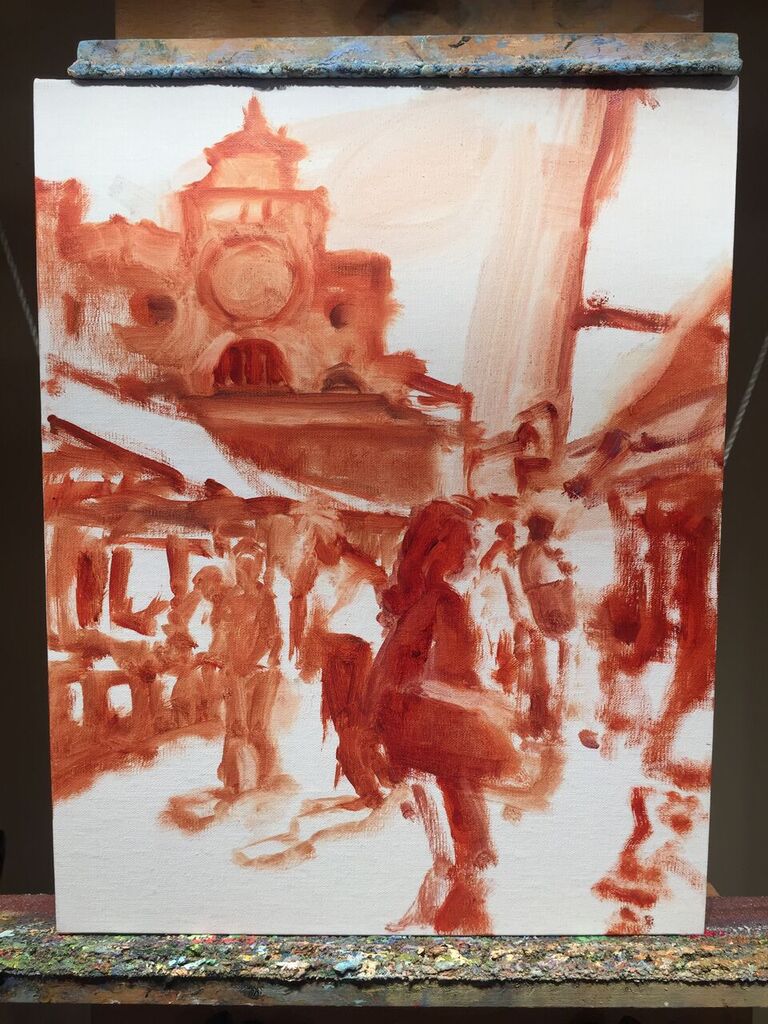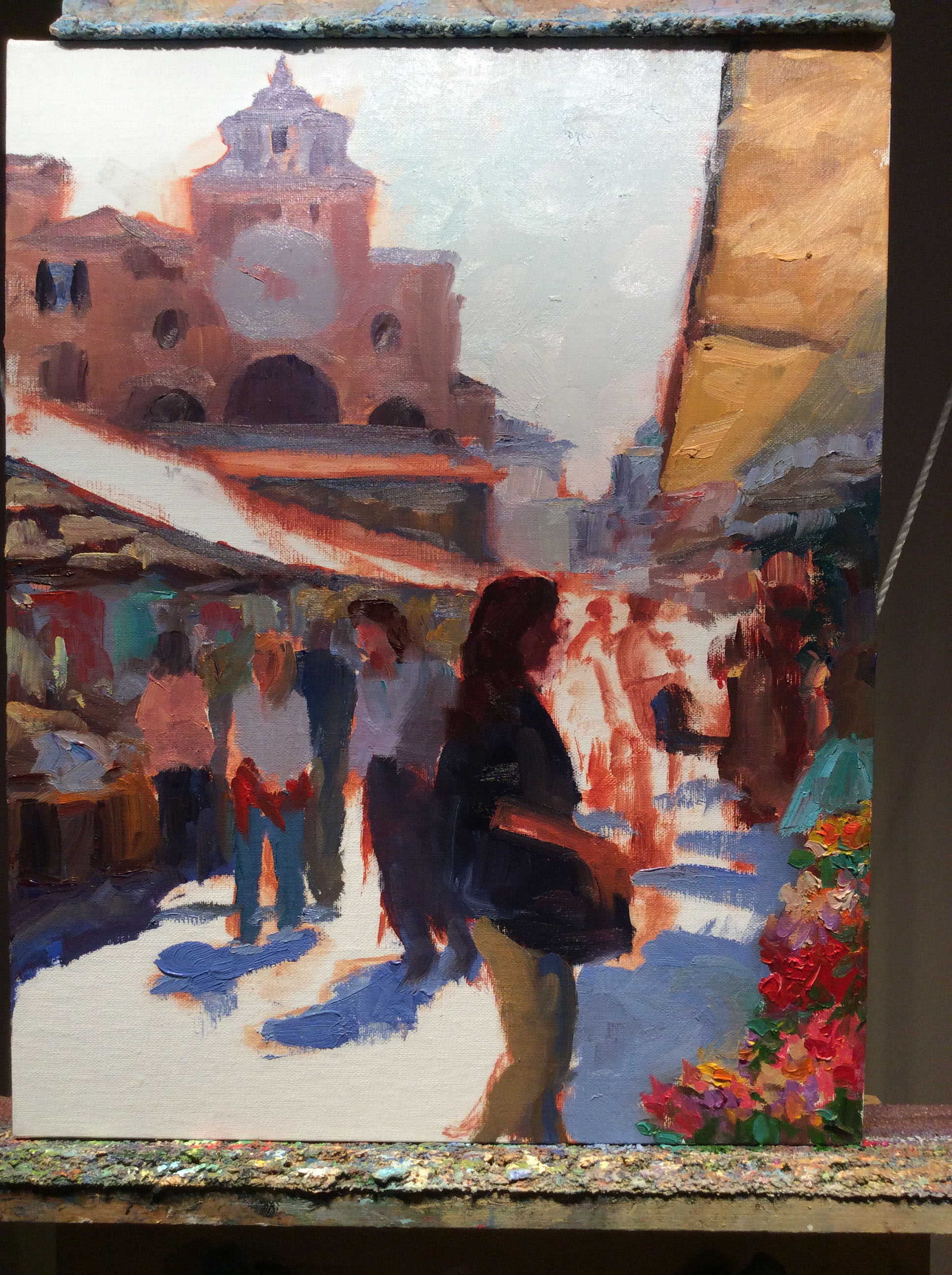Edges, mark-making and tools
/Happy New Year!🎉 Okay, granted I am a little late to the party, but I’ve had a busy couple of weeks moving into a new exhibit space for 2019. More on that soon, but today I wanted to share a bit about mark making, and neat little tool that I stumbled upon along the way.
I didn’t have tons of time over Christmas break to paint, but it doesn’t mean it hasn’t been on my mind. I have been thinking a lot about how I can loosen up, to create pieces that are truthful but not quite so literal. One of the things I struggle with is varying not only color but brushwork, so that there is not so much sameness everywhere. I vary brush sizes and shapes, but it still can leave me feeling a little bit like there must be something more. Sometimes I want to push a bunch of paint around and brushes alone don’t always do that.
Then one day, I purchased a Color Shaper. I actually bought this to spread gesso, because I have some pre-gessoed canvases that I bought that have been sitting around in my studio unused because are still a bit too rough and absorbent for my liking.
Before I even used it for gesso, I got curious. I had heard of other artists using these tools fairly extensively for applying paint in their work and I got to wondering whether it might be a useful tool for varying my edges and textures in my painting.
It didn’t really do what I was hoping for. These shapers come in varying degrees of firmness and the tool I ordered was an extra firm. Good for gesso spreading, but not for my painting. Still, I saw the potential so I went back online to see if I could get another one with more flexibility. But before I got that far, I stumbled upon these do-hickeys and fell in love.
These guys, officially called Princeton Catalyst Wedges, are made of some kind of silicone or rubber and come in a variety of shapes . They are more flexible than my prior purchase but still firm enough to move the paint. They don’t have handles, but frankly I prefer this handle- less variety because it allows for more control.
What does it do? Well, for starters it pushes a heck of a lot of paint around, creating the ability to make bold, impasto passages or thinner, more ethereal ones.
I can use it to make a fairly straight edge with the straight, thin side of the tool, or use it t scrape down passage to create softer edges.
I can use it as a blending tool, or a tool to separate out colors and make them stand out. In short, I can use it to exploit the properties of the paint in a way that is a nice variation from straight-on brushwork .
I first ordered the white tool, pictured above, left. Then then I discovered the black, which I like even better because you have greater versatility with both a long and a short edge. “Why not just use a palette knife,” you might ask? Well, I do love palette knife paintings but I always just end up switching back to brushes and reworking them because I have never been quite able to achieve that combination of softness and boldness I aim for. These little tools act like palette knives with more of a brush feel, if that makes sense.
I’m still not ditching my paint brushes; they are the work horses in my studio. But I’m having fun playing around with these new tools and exploring what I can do with them in my paintings.

























